IBM (NYSE:IBM) of Armonk, NY, is a technology development and consulting giant as well as a patenting powerhouse which is often featured in our Companies We Follow series here on IPWatchdog. The corporation is a major player in the big data sector and a recent big data market share report, produced by business technology practitioner community Wikibon, shows IBM with 9.3 percent, or just over $2.1 billion, of the total big data market, well in front of second-place SAP SE (NYSE:SAP) which took in $890 million, or 3.9 percent of the global big data market, in 2015. IBM CEO Ginni Rometty has reportedly stated that the company sees cognitive computing and machine learning, both of which have heavy ties to big data, growing as a market by $2 trillion over the next decade.
Cloud computing has also been a valuable sector for IBM in recent years and it has recently expanded its offerings in this field through the acquisition of Britain-based Optevia, a developer of customer relationship management (CRM) software services for public sector clients. Corporate collaboration with programmable logic device supplier Xilinx, Inc. (NASDAQ:XLNX) will look to accelerate development in infrastructure, software and middleware for data center applications. At the end of March, IBM announced a partnership with the Lawrence Livermore National Laboratory to pursue the development of a supercomputing platform for deep learning inference designed to replicate the neural networks of the human brain. Elsewhere, IBM is also getting more heavily involved in the blockchain sector of digital currencies, including applying so-called 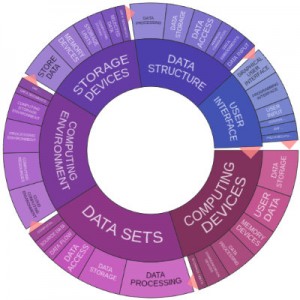 “shadowchain” techniques into its own global finance division.
“shadowchain” techniques into its own global finance division.
For 23 straight years, IBM has received the greatest number of patents from the U.S. Patent and Trademark Office of any other competitor by a fairly wide margin. The tech giant took in 7,355 U.S. patents during 2015, greater than 2,000 patents more than second-place patenting firm Samsung Electronics Co. (KRX:005930), which earned 5,072 U.S. patents during 2015. IBM’s 2015 patent totals was lower than the tech firm’s 2014 results, when it earned a total of 7,481 U.S. patents.
IBM has started strong with a remarkable patent pace in 2016. According to analytics tools provided by Innography, so far through the first three months of the year, IBM has already earned 1,927 U.S. patents. As the text cluster posted to the right shows, not surprisingly, much of IBM’s patent activities have been focused on computing devices, data sets, computing environment, storage devices and data structures.
Given the volume of patents IBM applies for and receives a comprehensive review of their portfolio for an article is simply impossible. Nevertheless, what follows is a summary of some of the patents and patent applications that caught my attention as I reviewed their recently granted patents and recently published applications.
IBM’s Recent Patents: From Vehicle-to-Vehicle Hazard Messages to Food Product Recognition
Question-answer (QA) services have certainly been an area of R&D focus for IBM, whose recent developments in that area include the technology protected by U.S. Patent No. 9292597, entitled Smart Answer Routing and Answerer Growing for Online Community Question-Answer Services. It claims a method for identifying at least one prospect answerer for a question on a QA forum by accessing QA forum activity associated with users of that QA forum and other QA forums, accessing historical online social activity corresponding to QA forum users, determining a similarity between elements of a question on the QA forum and the elements associated with QA forum users, selecting at least one user of the QA forum as a model answerer and identifying a prospect answerer amongst the QA forum users. This innovation is designed to address a shortcoming in conventional QA systems in which most questions are answered by a small group of answerers, which can cause delays in answering a growing number of questions.
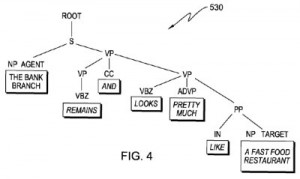 Natural language technologies are another area where IBM has pursued recent innovative advances, as is evidenced by the issue of U.S. Patent No. 9292490, which is titled Unsupervised Learning of Deep Patterns for Semantic Parsing. It protects a method of unsupervised learning of deep patterns for semantic parsing using an algorithm operating over a VerbNet corpus, the method involving receiving a set of exemplary sentences from a language net, extracting a plurality of markup language files from VerbNet which correspond to a usage pattern P, parsing each of the exemplary sentences to yield a set of training constituency trees respectively corresponding to exemplary sentences, performing maximal frequent subtree analysis on the set of training constituency trees to yield an unfiltered set of deep pattern trees and filtering at least one irrelevant tree from the set of deep pattern trees to obtain a filtered set of deep pattern trees. This natural language technology, which leverages the lexical resources available through the VerbNet project at the University of Colorado, enables deeper semantic parsing which allows for the assignment of thematic roles to grammatical portions of a natural language sentence.
Natural language technologies are another area where IBM has pursued recent innovative advances, as is evidenced by the issue of U.S. Patent No. 9292490, which is titled Unsupervised Learning of Deep Patterns for Semantic Parsing. It protects a method of unsupervised learning of deep patterns for semantic parsing using an algorithm operating over a VerbNet corpus, the method involving receiving a set of exemplary sentences from a language net, extracting a plurality of markup language files from VerbNet which correspond to a usage pattern P, parsing each of the exemplary sentences to yield a set of training constituency trees respectively corresponding to exemplary sentences, performing maximal frequent subtree analysis on the set of training constituency trees to yield an unfiltered set of deep pattern trees and filtering at least one irrelevant tree from the set of deep pattern trees to obtain a filtered set of deep pattern trees. This natural language technology, which leverages the lexical resources available through the VerbNet project at the University of Colorado, enables deeper semantic parsing which allows for the assignment of thematic roles to grammatical portions of a natural language sentence.
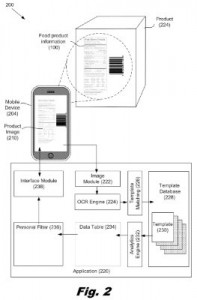 Technologies for the purchase and consumption of better food products is the focus of U.S. Patent No. 9292565, issued under the title Template-Based Recognition of Food Product Information. It discloses a method that involves capturing an image of food product packaging, extracting an attribute from the image, finding a template in a template database which matches the attribute, extracting food product information from the template by referencing the matching template, using data redundancies identified in the image to cross check the extracted food product information, transforming the food product information according to user defined preferences and displaying the transformed information to a user. This innovation enables more accessibility to important nutritional information for consumers with dietary restrictions because of health or allergy reasons, especially when that information may not be readily apparent on the food packaging.
Technologies for the purchase and consumption of better food products is the focus of U.S. Patent No. 9292565, issued under the title Template-Based Recognition of Food Product Information. It discloses a method that involves capturing an image of food product packaging, extracting an attribute from the image, finding a template in a template database which matches the attribute, extracting food product information from the template by referencing the matching template, using data redundancies identified in the image to cross check the extracted food product information, transforming the food product information according to user defined preferences and displaying the transformed information to a user. This innovation enables more accessibility to important nutritional information for consumers with dietary restrictions because of health or allergy reasons, especially when that information may not be readily apparent on the food packaging.
We were also intrigued to note a trio of patents recently issued to IBM in automotive and related sectors, starting with the crash damage mitigation technology protected by U.S. Patent No. 9292635, titled System and Method for Collaborative Vehicle Crash Planning and Sequence Deployment. This patent protects a method for real-time crash modeling which involves using a processor device operatively coupled with at least one sensor in a parallel computing environment to derive a likelihood of an impact occurring between two vehicles, negotiating a crash modeling protocol between both vehicles by partitioning the parallel computing environment into partitions between computing nodes representing either vehicle and determining an optimal crash sequence that minimizes possible injury and damage by iteratively performing the steps of exchanging information between vehicles according to the crash modeling protocol, collaboratively computing a crash model prior to the impact and exchanging the computed crash model. This technology seeks to create a collaborative approach to optimize crash outcomes and reduce the number of annual high speed vehicle-related fatalities in America from 43,000. 
Technologies for communicating information between vehicles are also at the center of U.S. Patent No. 9293045, issued under the title Vehicle to Vehicle Communication. It claims a method that involves receiving at a second vehicle a message from a first vehicle which includes hazards on the second vehicle, querying an engine control unit of the second vehicle to verify a first hazard, verifying that the hazard exists or is intermittent on the second vehicle and storing the portion of the message containing the hazard information. The innovation is designed to provide methods of communications between vehicles to identify local hazards, like letting another driver know that they’re driving without headlights or with an under-inflated tire.
Enhanced methods of traffic routing involving stoplight timing are discussed within U.S. Patent No. 9293041, which is titled Traffic Monitoring via Telecommunication Data. It claims a system comprising at least one computing device configured to monitor a motor vehicle traffic pattern by obtaining telecommunications data from a plurality of mobile devices within a hyper-local area of a geographic area intersecting five or fewer telecommunications towers over a hyper-local period, identifying a set of mobile devices within the plurality of mobile devices traveling by the motor vehicle from the telecommunications data, determining the motor vehicle traffic pattern based upon the telecommunications data from the set of mobile devices traveling by motor vehicle, comparing the determined motor vehicle traffic pattern with a threshold traffic pattern and providing instructions for modifying at least one traffic signal device in response to the determined motor vehicle traffic pattern deviating from the threshold traffic pattern. This invention enables a system which improves traffic flow by synchronizing stoplight patterns with traffic which works regardless of the vehicles age, make or model.
Patent Applications of Note: From Artificial Soils to Prevent Allergic Diseases to Drone Package Transport Systems
IBM continues to seek innovative advances in cloud computing, as is reflected by the recent filing of U.S. Patent Application No. 20160080407, filed under the title Managing Operations in a Cloud Management System. It would protect a system having one or more computer processors, one or more computer-readable storage media, program instructions stored on the storage media and executed by the processors to receive a user request for performing a cloud operation on a cloud resource in a cloud management system, determine a security assessment of the cloud operation based on an analysis of user data associated with the user request and cloud resource data associated with the cloud resource and display the security assessment in a cloud management system display. This system is designed to improve the ease by which cloud administrators can find out whether it is safe to approve a request of cloud management operations with the help of a security assessment to contextualize the request.
We took some time to explore a few recent IBM innovations related to the healthcare sector, such as is outlined within U.S. Patent Application No. 20160078818, which is titled Evidence Based Medical Record. It discloses a method of providing a confidence-estimation-based inference by receiving a query concerning a patient from a user, accessing an electronic health record (EHR) including a first component for the patient, querying the user for a second component regarding the patient, calculating a first probability density function using the first component and a second probability density function using the second component, combining both probability density functions using a Gaussian mixture model, calculating at least one conditional probability table using the Gaussian mixture model and providing the confidence-estimation-based inference based on at least one conditional probability table. This invention seeks to define a link between natural language processing systems and EHR technologies. A ![]() computer chip technology that can analyze human tears to determine the health of a patient is described within U.S. Patent Application No. 20160073872, which is titled Semiconductor Device to be Embedded Within a Contact Lens. This patent application discloses a semiconductor device having a sensor determining one or more properties associated with an analyte within a fluid surrounding the contact lens, a processing circuit coupled to the sensor and generating a signal associated with the determined analyte properties, a power supply coupled to the processing circuit providing DC power to the circuit, a boost circuit coupled to the power supply and increasing the provided DC power of the power supply for transmitting the signal generated by the processing circuit and an antenna coupled to the processing circuit for transmitting the generated signal, wherein all circuits and other components are contained on a single unpackaged semiconductor die. Embodiments of this invention radio-frequency radiation generated by the semiconductor away from the wearer’s eye, reducing the health impacts from radiation which could include eye burns or brain tumors.
computer chip technology that can analyze human tears to determine the health of a patient is described within U.S. Patent Application No. 20160073872, which is titled Semiconductor Device to be Embedded Within a Contact Lens. This patent application discloses a semiconductor device having a sensor determining one or more properties associated with an analyte within a fluid surrounding the contact lens, a processing circuit coupled to the sensor and generating a signal associated with the determined analyte properties, a power supply coupled to the processing circuit providing DC power to the circuit, a boost circuit coupled to the power supply and increasing the provided DC power of the power supply for transmitting the signal generated by the processing circuit and an antenna coupled to the processing circuit for transmitting the generated signal, wherein all circuits and other components are contained on a single unpackaged semiconductor die. Embodiments of this invention radio-frequency radiation generated by the semiconductor away from the wearer’s eye, reducing the health impacts from radiation which could include eye burns or brain tumors.
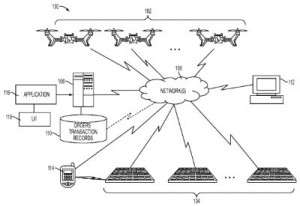 Although we’ve reported on the regulatory hurdles blocking long-distance drone transports in America, IBM is still interested in this sector as is evidenced by the filing of U.S. Patent Application No. 20160068265, entitled Package Transport by Unmanned Aerial Vehicles. It would protect a package transport system having an unmanned aerial vehicle (UAV) capable of flying between a pick up point and a delivery point with respect to a package transfer operation, the delivery point identifiable by global positioning system (GPS) coordinates and a package docking device identifier, and then a control processor coupled to the UAV to receive a transaction packet including GPS coordinates and the package docking device identifier for the package transfer operation, verify whether the device identifier matches the device identifier in the transaction packet upon arrival at the delivery point and implementing a package transfer operation upon determining that the device identifiers match. The system is designed to improve access to consumer products in mountainous terrains, remote camping locations or in other areas where delivery vehicle access is limited.
Although we’ve reported on the regulatory hurdles blocking long-distance drone transports in America, IBM is still interested in this sector as is evidenced by the filing of U.S. Patent Application No. 20160068265, entitled Package Transport by Unmanned Aerial Vehicles. It would protect a package transport system having an unmanned aerial vehicle (UAV) capable of flying between a pick up point and a delivery point with respect to a package transfer operation, the delivery point identifiable by global positioning system (GPS) coordinates and a package docking device identifier, and then a control processor coupled to the UAV to receive a transaction packet including GPS coordinates and the package docking device identifier for the package transfer operation, verify whether the device identifier matches the device identifier in the transaction packet upon arrival at the delivery point and implementing a package transfer operation upon determining that the device identifiers match. The system is designed to improve access to consumer products in mountainous terrains, remote camping locations or in other areas where delivery vehicle access is limited.
Three-dimensional (3D) audio and visual projections with directional sound techniques for enhanced sound reproduction quality are detailed within U.S. Patent Application No. 20160080684, entitled Sound Source Selection for Aural Interest. This patent application claims a method for providing viewer-selectable audio in a video by recording a first video of a 3D scene using at least one video camera and at least one microphone, determining a first sound source for the microphone and generating a second video having a first audio display region corresponding to the first sound source, wherein the microphone records audio from the first source on an audio channel distinct from audio channels of other microphones, the first audio display region is user-selectable region corresponding to a set of pixels within the second video and selection of the first audio display region plays an audio recording made by the microphone. This technique for viewer-selectable audio in 3D video content enables a cocktail party effect which can filter out noisy stimuli from a single conversation on which a viewer wants to focus.
More efficient and cost-effective systems for the recycling of batch materials are at the center of U.S. Patent Application No. 20160069840, entitled Methods and Systems to Identify and Manage Recyclable Materials. It would protect a method of providing a recyclable material with an identification device comprising a quartz crystal oscillating at a predetermined frequency associated with the recyclable material, detecting the oscillation frequency of the quartz crystal using a mobile device, identifying the recyclable material based on the detected oscillation frequency and sending information to a controller which is representative of the identity of the recyclable material. This system is designed to identify materials that can be recycled and separate those materials to encourage efficient recycling systems.
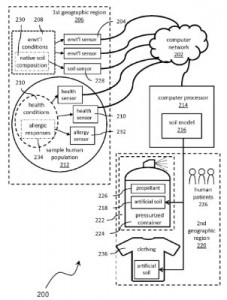 Finally, we were intrigued to take note of an IBM innovation which seeks to rid allergic diseases from human populations, discussed within U.S. Patent Application No. 20160070273, which is titled Prevention of Diseases via Artificial Soil Exposure. It discloses a method for determining soil composition for preventing allergic diseases by providing a computer network, providing environmental sensors in a first geographic region to measure environmental conditions of the region, providing health sensors for a sample human population in the first geographic region to measure health conditions of the sample population, computing a soil model that prevents allergic diseases based on the environmental and health conditions and then synthesizing artificial soil so that it replicates the computed soil model. This innovation is based on recent scientific developments into the link between increased incidences of allergic diseases in children and the cleanliness of the environments of those children as babies.
Finally, we were intrigued to take note of an IBM innovation which seeks to rid allergic diseases from human populations, discussed within U.S. Patent Application No. 20160070273, which is titled Prevention of Diseases via Artificial Soil Exposure. It discloses a method for determining soil composition for preventing allergic diseases by providing a computer network, providing environmental sensors in a first geographic region to measure environmental conditions of the region, providing health sensors for a sample human population in the first geographic region to measure health conditions of the sample population, computing a soil model that prevents allergic diseases based on the environmental and health conditions and then synthesizing artificial soil so that it replicates the computed soil model. This innovation is based on recent scientific developments into the link between increased incidences of allergic diseases in children and the cleanliness of the environments of those children as babies.

![[IPWatchdog Logo]](https://ipwatchdog.com/wp-content/themes/IPWatchdog%20-%202023/assets/images/temp/logo-small@2x.png)

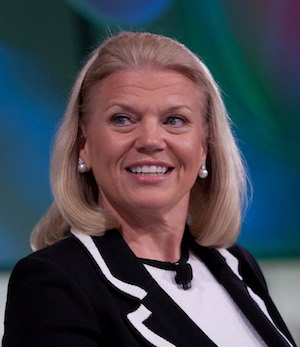
![[[Advertisement]]](https://ipwatchdog.com/wp-content/uploads/2023/01/2021-Patent-Practice-on-Demand-1.png)
![[Advertisement]](https://ipwatchdog.com/wp-content/uploads/2024/04/Artificial-Intelligence-2024-REPLAY-sidebar-700x500-corrected.jpg)
![[Advertisement]](https://ipwatchdog.com/wp-content/uploads/2024/04/Patent-Litigation-Masters-2024-sidebar-700x500-1.jpg)

![[Advertisement]](https://ipwatchdog.com/wp-content/uploads/2021/12/WEBINAR-336-x-280-px.png)
![[Advertisement]](https://ipwatchdog.com/wp-content/uploads/2021/12/2021-Patent-Practice-on-Demand-recorded-Feb-2021-336-x-280.jpg)
![[Advertisement]](https://ipwatchdog.com/wp-content/uploads/2021/12/Ad-4-The-Invent-Patent-System™.png)






Join the Discussion
No comments yet.